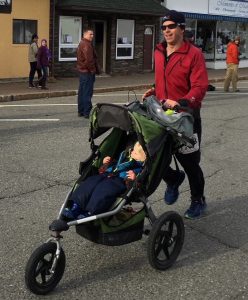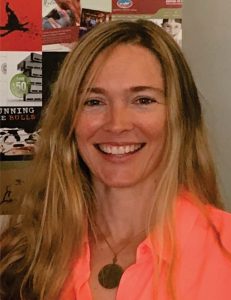Looking Back, Moving Forward
Mitchell Center helps Katahdin region assess its economic and community resilience

In March 2016, Linda Silka, community psychologist and Senior Fellow at the Senator George J. Mitchell Center for Sustainability Solutions, wrote an Op-Ed in the Bangor Daily News describing the deep commitment of many UMaine faculty and students to work with communities in tackling complex or “wicked” problems at the intersection of economic, sociocultural, and environmental issues.
Jessica Masse, a community leader in the Millinocket region and member of the Katahdin Revitalization Group, read the op-ed and emailed Silka inviting her to come to the region to talk about “how we might be able to use UMaine research, particularly the ‘knowledge-to-action’ work at the Mitchell Center, to help our community tackle our transition from a papermaking community to a diversified economy that can flourish in the globalized economy.”
Silka gladly accepted the offer and traveled to the region to meet with residents working on plans for a visioning process for eight communities that were struggling to overcome setbacks associated with mill closures.
The momentum kept building and led to more meetings of Silka and her colleagues with regional leaders—all of which eventually resulted in funding through the Mitchell Center that is currently supporting research by an interdisciplinary team of UMaine students and faculty. Additional support for the project is being provided by the Elmina B. Sewall Foundation and The Nature Conservancy.
Community leaders and residents in the region’s eight towns—Millinocket, East Millinocket, Medway, Sherman, Stacyville, Patten, Mount Chase, and Island Falls—asked the team to provide an unbiased assessment of the economic and social “well-being” of their communities.

Adam Daigneault, assistant professor of Forest, Conservation, and Recreation Policy in the School of Forest Resources and Mitchell Center Fellow, is leading the assessment project.
“The Katahdin Region has been in transition for decades as its forest products industry has declined,” says Daigneault. “But people are hanging on and trying to figure out what can they do, how they can move forward.”
The quantitative assessment includes a variety of indicators, such as unemployment rate, household income, population size, age of residents, etc. Factsheets summarize the information for each town, and provide comparisons with the region as a whole, Penobscot and Aroostook Counties, Maine and the nation. The factsheets are being used to understand past and current conditions and make informed decisions about how to strengthen the region’s future.
In addition, a survey of the region’s residents is underway. The purpose of this survey is to understand how residents view community and economic well-being in the region and help gather ideas about how the area can grow socially and economically. The survey asks community members their views about a wide range of issues, including the commitment of local residents to their town’s well-being, the extent to which community meetings help residents stay in touch with local issues, and the capacity of the community to work together in solving local problems.
Of the qualitative survey, Daigneault notes, “The hope is that we can conduct this on a regular basis to track whether the perceptions of residents are changing, and how these changes may be related to the indicators we are also tracking.”

Silka is also a team member, along with other Mitchell Center Fellows, including social scientists Sandra De Urioste-Stone and Mindy Crandall, and forest ecosystem scientist Aaron Weiskittel. Stakeholder partners include more than a dozen groups within the Katahdin Collaborative network including local governments, Our Katahdin, The Nature Conservancy, and Katahdin Revitalization Group.
Daigneault and Silka shared some of the assessment’s results, including their relevance for the region’s planning efforts, at the Katahdin Revitalization Speakers Series where Jessica Masse noted that the work was being framed by the communities as a “no-nonsense” look at the numbers.
“In our many discussions leading up to this event, our team concluded that local people understand that the area is fragile, but they may not understand how fragile or how to focus on the most important things that will really move the needle in a positive direction,” Masse said.
“…the Mitchell Center team can help us learn about the creative ways in which other communities who have experienced economic calamity have been able to move forward.” —Jessica Masse
She added, “We are also saying that the Mitchell Center team can help us learn about the creative ways in which other communities who have experienced economic calamity have been able to move forward.”
One small measure of the overall effort’s progress, Silka notes, came in the wake of an intense and at times emotional meeting where one community member expressed considerable frustration about the region’s problems and the process of addressing them.
Says Silka, “The meeting focused on how we (the university) could potentially help by partnering with communities, listening closely, and not deciding on our own what the problems are.”
This was apparently just what the doctor ordered and, at that meeting’s end, the same frustrated community member said, “I want you all to know that you are the best of what public, land-grant universities should be!”
—David Sims
